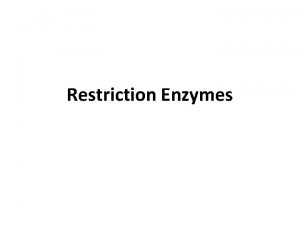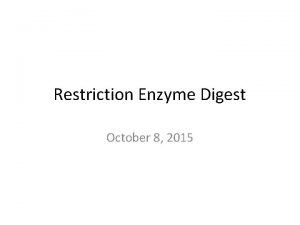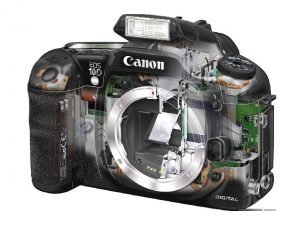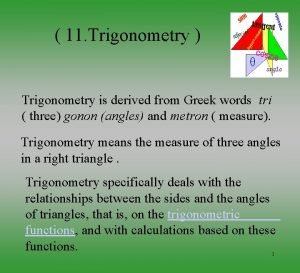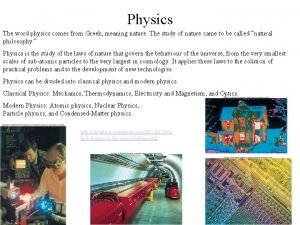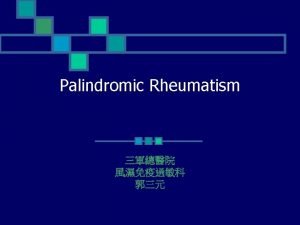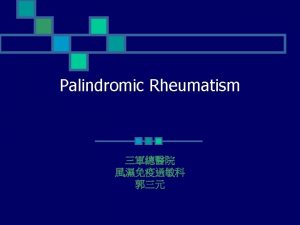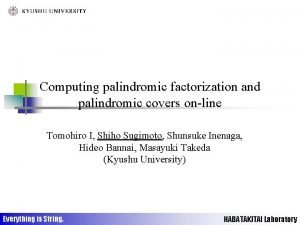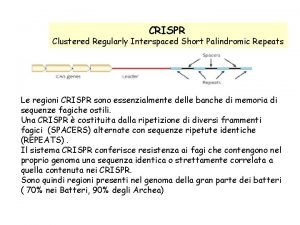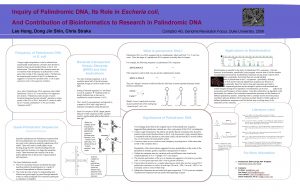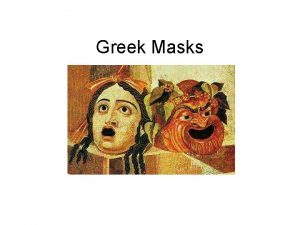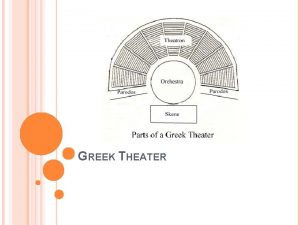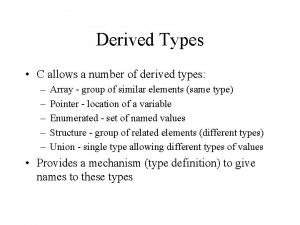Introduction n n Palindromic derived form the Greek


















































- Slides: 50


Introduction n n Palindromic– derived form the Greek (palindromos), means to run back 復發性風濕症,陣發性風濕症 First used by Hench and Rosenberg in 1944, they described 34 patients presenting with a unique set of signs and symptoms Multiple recurring a febrile episodes of acute arthritis, periarthritis, and sometimes para-arthritis, lasting from few hours to several days, then subsided completely, no residual articular effect

Cases Presentation

Case 1 n A 40 -year-old female, had migratory arthritis from hands, wrist and knee joints for 6 years, each episode attack one joint and subsided promptly after NSAIDs or spontaneously. PE showed redness and tenderness over right second PIP joint, lab data showed negative RF and ANA, CRP: 1. 2, uric acid: 5. 3 mg/dl, no family history of rheumatic disease, NSAIDs was given in acute attack and now the clinical symptoms still remained the same presentation

Case 2 n A 46 -year-old female, who complained migratory arthritis from PIP, wrist and knee joints for one year, each episode last for 2 -3 days and subsided by spontaneously or by NSAIDs. Lab data showed RF: 53, ANA: negative, CRP: 0. 4, uric acid: 4. 2, due to the clinical symptoms increased frequency and duration, she received geniquin and salazopyrin treatment, now the clinical condition was well controlled

Case 3 n A 22 -year-old male, who complained migratory arthragia/arthritis from elbow, knee and hip joints for months, no low back pain or morning stiffness, no family history, lab data showed ANA and RF were negative, CRP: 0. 82, HLA-B 27 showed positive and pelvis X-ray was negative findings for sacroillitis, NSAIDs was prescribed

Palindromic rheumatism n n n Age of onset 30 -40 (from 20 to 70) Female equal to male No ethnic predisposition Etiology unknown Pathogenesis unclear

Clinical features n n n Monoarthritis with maximal intensity in hours, at any time of the day, usually without any obvious inciting event Strike almost any joint, but the spine and hip joints are rarely affected Initial attacks at knees, fingers or shoulders, the attacks are confined to a single joint The pain is very severe or excruciating, like gout or septic arthritis Para-articular tissues also involved in 30 %

Clinical features n n The acute episodes last less than 2 days in most of the cases, sometimes 2 hours, rare extend for two weeks Variable frequency Rare or no constitutional symptoms Nodules located at the tendons of hands or finger, or on the thumb pads, but different histology from RA, transient and smaller



Joint involvement Mean% of patients Range of % of patients MCP & PIP 91 74 -100 Wrists 78 54 -82 Knees 64 41 -94 Shoulders 65 33 -75 Ankles 50 10 -67 Feet 43 15 -73 Elbows 38 13 -60 Hips 17 0 -40 T-M joints 8 0 -28 Spine 4 0 -11 S-C joint 2 0 -6 27 20 -29 Para-articular Guerne PA Am J Med 1992

Lab n n n n ESR and CRP are usually elevated during acute episodes ESR might be more likely elevated in patients who subsequently developed RA ? Normal CBC ANA X-ray Synovial fluid Rheumatoid factor Anti-CCP

Rheumatoid factors in PR n In three series studies Reference PR(%) PR → RA F/U Hannonen 1987 11/25 (44) 29/35(83) 5 years Bregeon 1986 3/16(19) 16/25(64) 10 years Wajed 1977 2/22(9) 16/17(94) 10 years

Pathology n n Periarticular edema and gross thickening of the joint capsule, infiltration with PMN, no pannus formation or cartilage destruction Between episodes, no significant evidence of inflammation in gross and histologic examination

Pathology n n n 5 PR pts before developed to RA were examined, including EM Minimal superficial reaction and only mild lining cell hyperplasia (1 -3 layers) with more neutrophils Fibrin and cellular thrombi are noted in some small blood vessels along with congestion and some perivascular fibrosis Synovial fluid analysis showed variable leukocyte couts(150 -12700) From pathological findings couldn’t allow to predict the PR progression to RA Schumacher HR. Arthitis Rheum 1982

Genetic factors n n n HLA-DRB 1 shared epitope (SE) in RA, but in PR? Increased prevalence of the DRB 1 -0401 and 0404 in PR patients (65%) versus controls(39%) who progression to RA HLA-DRB 1 -0803 maybe a genetic marker in Korean PR patients , not correlated with RA Ann Rheum Dis 2006 HLA-DR 4 ? , no definite conclusion Cytokine gene polymorphisms – no association J Rheumatol 2002

Triggering factors n n n Single factor Multiple factors None n n n Physical activity Foods Weather change

Physical activity n n n n Rapid walking Running Hammering Climbing Limb exercise Typewriting Housework

Foods n n n Alcohol Fish Eggs Canned vegetables Processed cheese Nesher, G Clinical & Exp Rheumatol 18(3), 2000

Proposed diagnostic criteria n n n A 6 -month history of brief sudden-onset and recurrent episodes of monoarthritis or rarely polyarthritis or of soft tissue inflammation Direct observation of one attack by a physician Three or more joints involved in different attacks Absence of erosions on radiographies Exclusion of other arthritis Pasero G, Barbieri P , Clin Exp Rheumatol 1986

Pregnancy and PR n n n Over 70% patients with RA experience improvement of symptoms during pregnancy 30 -50% PR patients developed to RA, have the same effect ? Few cases reports support these findings

Treatment n n n Avoid triggering factors NSAIDs DMARDs Biologic agents? Steroids No large randomized, controlled trials

Antimalrials n n n Can decrease progression of PR to RA or other CTD estimated median time to development of a chronic disease was 162 months in treated and 56 months in untreated patients Risk reduction for RA – 0. 36 and for RA or other CTD– 0. 41 Gonzalez-Lopez, L Jounrnal of Rheumatology, 27(1), 2000

Outcome of PR Palindromic rheumatism remission persistent RA or CTD

Prognostic factors for the development to RA or other CTD in PR Laura. G-Lopez J Rheumatol 1999

Laura. G-Lopez J Rheumatol 1999

Laura. G-Lopez J Rheumatol 1999

Prognostic factors for PR to RA n n Positive RF had 3 -fold risk Early involvement of wrist or PIP had 2 fold risk Female gender+ RF+ hand involvement had 8 -fold risk No major effect on the length or frequency of attacks n. Laura. G-Lopez J Rheumatol 1999

Evolution of PR patients in 9 series No. of cases Remission persistent PR or cure(%) 1. 2. 3. 4. 5. 6. 7. 8. 9. PR-RA Other Dis (%) 34 140 179 39 70 38 43 50 60 15 8 10 0 24 8 23 0 43 85 52 47 56 34 66 23 46 21 0 36 38 44 30 15 49 54 35 0 4 5 0 12 11 5 0 2 653 15 48 33 4 Guerne PA Am J Med 1992

Palindromic rheumatism ∥ Rheumatoid arthritis

Anti-cyclic citrullinated peptides (anti-CCP) n n n n A group of antibodies direct to citrullinated antigens, mostly considered as a disease marker for RA Anti-CCP antibodies are antibodies against antigens containing the unusual amino acid citrulline, including modified fibrin(filaggrin), which is present in RA joint High specificity for RA (97%) and high sensitivity rate (80 -90%) Powerful diagnostic tool for early detection of RA Predict the development of RA in healthy subjects In RF- , clinical suspect RA, the anti-CCP is very helpful Associated with more aggressive and erosive RA

Anti-CCP predict progression to RA in patients with undifferentiated arthritis n 318 patients with recent onset arthritis, followed 3 years Van Gaalen FA, arthritis Rheum 2004

Specific autoantibodies precede the symptoms of RA n n Can we predict early RA from serum specific antibodies? Ig. M-RF Anti-CCP Ig. M-RF + anti-CCP Markus M. J. Nielen Arthritis & Rheumatism 2004

Markus M. J. Nielen Arthritis & Rheumatism 2004

Markus M. J. Nielen Arthritis & Rheumatism 2004

Results n n n Near ½ patients with RA have specific serologic abnormalities several years before the onset of symptoms Elevated serum level of Ig. M-RF or anti-CCP in a healthy individual implies a high risk for development of RA Ig. M-RF and anti-CCP may assist in the early detection of RA in high-risk populations Markus M. J. Nielen Arthritis & Rheumatism 2004

Anti-CCP and PR n In one study with 63 pts, 33 pure or persistent PR, 30 as associated PR( past history of PR and developed persistent arthritis---21 with RA), 60 early RA and 80 seronegative Sp. A as control G. Salvador, Rheumatology 2003

G. Salvador, Rheumatology 2003

n n In pure PR patients, anti-CCP was found in 56% and RF in 42%, which were highly correlated No significant clinical difference between anti. CCP+ and anti-CCP- pure PR pts The predictive value of anti-CCP as a marker of PR progression to RA ? PR is a abortive form of RA G. Salvador, Rheumatology 2003

n n n 61 pts with PR within the first year of the presentation 29/61(47%) developed to RA after a mean follow-up of 5. 4 years 83% of(29 RA) had anti-CCP in the baseline serum Anthony S. Russel, J Rheumatol 2006

Is palindromic rheumatism a form of rheumatoid arthritis? Or a distinct entity?

Part of RA ? n n 30 -50% PR patients evolved to RA High prevalence of RF and anti-CCP in PR patients Cutaneous nodules present in PR patients( different histology) Common response to DMARDs

Distinct entity? n n n Different inflammatory pattern, frequent remission and symptoms free interval, no apparent accumulation of disease No bone or joint destruction Constitutional symptoms are absent or rare No strong HLA association Affects male and female equally

Conclusion n Palindromic rheumatism is an idiopathic, periodic arthritis, last from few hours to several days, self-limited and no residual effects Anti-CCP and RF, hands involvement and female were risk factors from PR to RA Need long-term follow up and large cohort studies


Behcet’s syndrome n n n Recurrent oral ulcers Recurrent genital ulcers Eye involvement Skin lesions– erythema nodosum Pathergy test

Behcet’s syndrome n n Affect young male and female from the Mediterranean region, the Middle East and Far east ( Japan, Turkey) Blacks are not affected HLA-B 5 (B 51) – more expression of clinical manifestations and more severe clinical course May cause blindness – posterior uveitis

Pathergy test

 Molecular scissors
Molecular scissors Molecular scissors wikipedia
Molecular scissors wikipedia Palindromic triangular numbers
Palindromic triangular numbers Formula of polygon
Formula of polygon Photography is a greek word
Photography is a greek word Trigonometry greek word
Trigonometry greek word Geometry greek meaning
Geometry greek meaning Greek word of physics
Greek word of physics Technology came from the two greek word, *
Technology came from the two greek word, * Derived form
Derived form What is the greek miracle in greek mythology
What is the greek miracle in greek mythology Present continuous affirmative negative interrogative
Present continuous affirmative negative interrogative Hát kết hợp bộ gõ cơ thể
Hát kết hợp bộ gõ cơ thể Bổ thể
Bổ thể Tỉ lệ cơ thể trẻ em
Tỉ lệ cơ thể trẻ em Gấu đi như thế nào
Gấu đi như thế nào Glasgow thang điểm
Glasgow thang điểm Hát lên người ơi
Hát lên người ơi Các môn thể thao bắt đầu bằng tiếng đua
Các môn thể thao bắt đầu bằng tiếng đua Thế nào là hệ số cao nhất
Thế nào là hệ số cao nhất Các châu lục và đại dương trên thế giới
Các châu lục và đại dương trên thế giới Công thức tiính động năng
Công thức tiính động năng Trời xanh đây là của chúng ta thể thơ
Trời xanh đây là của chúng ta thể thơ Mật thư anh em như thể tay chân
Mật thư anh em như thể tay chân Phép trừ bù
Phép trừ bù Phản ứng thế ankan
Phản ứng thế ankan Các châu lục và đại dương trên thế giới
Các châu lục và đại dương trên thế giới Thể thơ truyền thống
Thể thơ truyền thống Quá trình desamine hóa có thể tạo ra
Quá trình desamine hóa có thể tạo ra Một số thể thơ truyền thống
Một số thể thơ truyền thống Cái miệng xinh xinh thế chỉ nói điều hay thôi
Cái miệng xinh xinh thế chỉ nói điều hay thôi Vẽ hình chiếu vuông góc của vật thể sau
Vẽ hình chiếu vuông góc của vật thể sau Thế nào là sự mỏi cơ
Thế nào là sự mỏi cơ đặc điểm cơ thể của người tối cổ
đặc điểm cơ thể của người tối cổ V. c c
V. c c Vẽ hình chiếu đứng bằng cạnh của vật thể
Vẽ hình chiếu đứng bằng cạnh của vật thể Vẽ hình chiếu vuông góc của vật thể sau
Vẽ hình chiếu vuông góc của vật thể sau Thẻ vin
Thẻ vin đại từ thay thế
đại từ thay thế điện thế nghỉ
điện thế nghỉ Tư thế ngồi viết
Tư thế ngồi viết Diễn thế sinh thái là
Diễn thế sinh thái là Dạng đột biến một nhiễm là
Dạng đột biến một nhiễm là Thế nào là số nguyên tố
Thế nào là số nguyên tố Tư thế ngồi viết
Tư thế ngồi viết Lời thề hippocrates
Lời thề hippocrates Thiếu nhi thế giới liên hoan
Thiếu nhi thế giới liên hoan ưu thế lai là gì
ưu thế lai là gì Sự nuôi và dạy con của hổ
Sự nuôi và dạy con của hổ Khi nào hổ con có thể sống độc lập
Khi nào hổ con có thể sống độc lập
